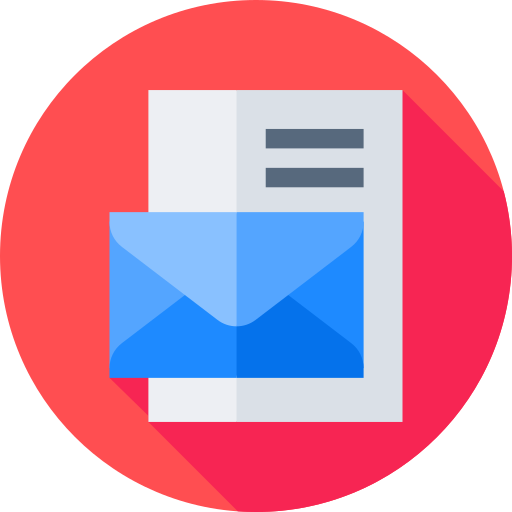Personalized Cover Letter for Postdocs (Academia)-AI academic cover letter generator.
AI-powered tool for personalized academic cover letters.
Cover Letter (Advertised Position)
Letter of Interest (Speculative Request)
Related Tools
Load More
Cover Letter
Boost interviews with compelling cover letters tailored to job applications - simple, quick, effective.
Cover Letter Assistant
Crafting effective, personalized cover letters

Cover Letter Crafter
I create personalized cover letters using your resume, job description, and company research.
Lettre de motivation IA
Générateur de lettre de motivation, à partir du CV d'un candidat, et de l'annonce à laquelle il désire postuler. Chargez votre CV en pièce jointe (format Word, PDF ou texte) puis collez le texte de l'annonce à laquelle vous voulez répondre.

Letter of Recommendation Expert
A counselor aiding in writing recommendation letters for PhD applications, with a formal and informative tone.
CoverLetter Almighty
Creates Effective Cover Letter
20.0 / 5 (200 votes)
Introduction to Personalized Cover Letter for Postdocs (Academia)
The 'Personalized Cover Letter for Postdocs (Academia)' tool is designed to assist academic professionals, particularly those seeking postdoctoral positions, in crafting highly customized cover letters for both advertised positions and speculative inquiries. It leverages data provided by the user (such as CVs, job postings, and lab details) to tailor letters that emphasize a candidate's specific qualifications, research interests, and potential contributions to the target department or lab. By integrating NLP (natural language processing) for document analysis, the system ensures that every cover letter is aligned with both the candidate’s background and the targeted institution’s expectations. For instance, a candidate applying for a postdoc position in a molecular biology lab might provide details about their most relevant publications and the job posting's requirements. The tool would then analyze both the applicant's and the lab's research focus, drawing connections between them to produce a tailored cover letter that demonstrates fit and enthusiasm for the role.

Main Functions of Personalized Cover Letter for Postdocs (Academia)
1. Job-Specific Cover Letter Creation
Example
A researcher is applying to a lab specializing in neurogenetics and provides the job description alongside their CV. The tool analyzes both, extracting key phrases from the job ad and matching them to relevant experience in the CV, such as a publication on gene expression in neural pathways.
Scenario
In this scenario, the researcher receives a cover letter that highlights their experience in neurogenetics, emphasizing how their background directly fulfills the lab's current research needs.
2. Speculative Letter of Interest Composition
Example
A researcher is interested in joining a renowned immunology lab but no open positions are advertised. They use the tool to analyze the lab’s recent publications and align them with their own work on T-cell responses.
Scenario
The tool produces a speculative letter of interest that effectively connects the researcher's focus on immunological pathways with the lab’s cutting-edge work, showing initiative and making the case for a potential future collaboration.
3. Dynamic Personalization Based on Feedback
Example
After reviewing the first draft, a candidate requests more emphasis on their grant-writing experience. The tool updates the cover letter to include a specific paragraph about their role in securing funding, ensuring it meets the candidate's evolving preferences.
Scenario
This function allows for iterative refinement. A researcher may revise their cover letter multiple times to ensure it emphasizes key strengths that are most relevant to each specific application.
Ideal Users of Personalized Cover Letter for Postdocs (Academia)
Postdoctoral Candidates in Academia
The primary users are PhD graduates or early-career researchers who are actively seeking postdoctoral positions. These individuals need to convey their specialized research skills and experience while aligning with the specific focus of the labs or departments to which they are applying. The tool helps them stand out by crafting tailored cover letters that not only highlight their qualifications but also demonstrate a deep understanding of the prospective lab's work.
Academic Professionals Seeking Speculative Opportunities
Another target group includes academic professionals who are looking to make speculative inquiries to labs they admire but which have not posted open positions. These users benefit from the tool’s ability to analyze research outputs from the target lab and align them with their own work, providing a solid foundation for speculative outreach.

How to Use Personalized Cover Letter for Postdocs (Academia)
Step 1
Visit aichatonline.org for a free trial without login, also no need for ChatGPT Plus. Access the platform directly and start crafting cover letters right away.
Step 2
Provide job specifics or research interests: upload relevant documents, job descriptions, or URLs to help personalize your cover letter.
Step 3
Select or analyze research publications: input related academic works or key papers to tailor your letter to the research focus of the department or lab.
Step 4
Draft and customize: utilize AI-driven suggestions to fine-tune your cover letter, highlighting your skills and contributions that align with the position.
Step 5
Review and finalize: polish the final draft, ensuring it meets academic standards and formatting requirements before submission.
Try other advanced and practical GPTs
Flutter Buddy
Your AI-powered Flutter coding partner.

思维导师
Empower Your Thinking with AI.

Java Guru
AI-powered Java solutions made simple.

精益智造
AI-powered efficiency for Lean processes

明智论文助手
AI-powered assistant for academic paper analysis and summarization.

Lesson Weaver
AI-powered reading and activity generator.

高级游戏开发工程师-Cocos2d-x
Master Cocos2d-x with AI-driven insights.

Excel专家
AI-driven insights for Excel efficiency.

Patrick Bateman's Design Critique
AI-powered design critique with a twist of Patrick Bateman.

Academic Paper Analyst
AI-powered tool for in-depth paper analysis.

Keto Companion
AI-powered keto diet assistant

创业导师
AI-Powered Mentor for Entrepreneurs

- Cover Letters
- CV Analysis
- Research Interests
- Postdoc Applications
- Academic Jobs
Frequently Asked Questions
How does Personalized Cover Letter for Postdocs (Academia) work?
This tool helps users draft personalized academic cover letters by analyzing job descriptions, research papers, and CVs. It aligns your skills with the academic institution’s needs, using AI-driven suggestions for content and structure.
Can I use it for speculative applications?
Yes, it’s designed to assist with both advertised positions and speculative requests. It helps you research the department or lab and craft a letter that aligns with their research focus.
What type of documents can I upload for analysis?
You can upload CVs, research publications, and job descriptions. The tool uses this information to tailor your cover letter based on your academic achievements and the specific requirements of the position.
How customizable is the generated cover letter?
The tool offers a highly customizable experience. You can adjust tone, structure, and content to match the academic institution’s culture and expectations, with options to emphasize particular skills or experiences.
Is this tool suitable for different academic fields?
Absolutely! It caters to a wide range of academic fields, from STEM to humanities, by analyzing the specific terminology and requirements of the job or research area you're applying to.